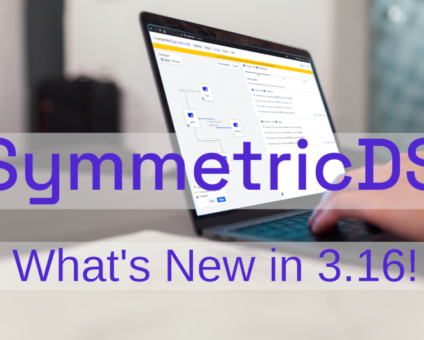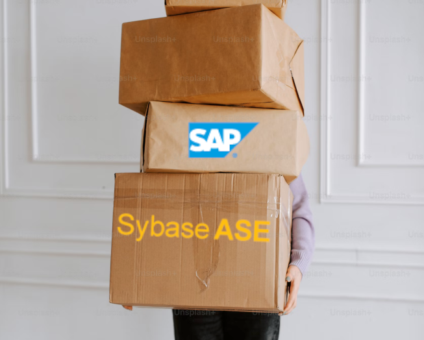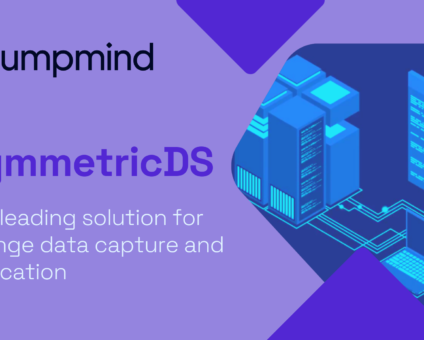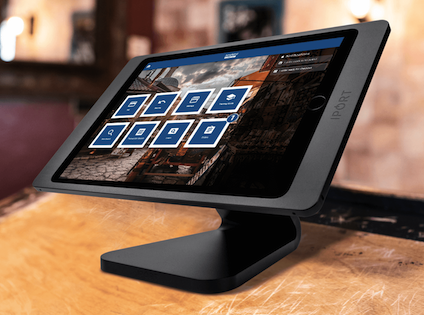Physical retail is still where the magic happens. According to new research by RSR, 85% …
![]()
Cloud-native POS platform for seamless omnichannel customer experience.
![]()
A single hub for all promotions campaigns.
- Omnichannel ExperienceCreate seamless customer experiences
- Device IndependencePOS agnostic to form factor or operating system
- Self-CheckoutDo more with fewer associates
- Mobile StoreLeverage POS from anywhere
- POS on the GoEnable associates to sell outside of the store
- Unified PromotionsStreamline and simplify promotion workflows
- CX ConnectAllow customers to engage with POS during checkout
- Composable CommerceCreate the store experience you want
![]()
The most advanced synchronization solution for databases and file systems.
![]()
Data configuration and batch automation across different disparate systems and vendors.
-
Data Replication
- Multi-tier DistributionReplicate thousands of remote locations
- Cloud Database ReplicationCapture live changes from on-premise to the cloud
- High Availability and Load BalancingEnsure 24/7 access to data and scale efficiently with demand
- Analytics and ReportingCapture the whole picture with real-time reporting
- Multi-masterMaintain consistency of data in a peer to peer setup
- Data WarehouseReplicate live and historical data to a warehouse
- MigrationsConduct live data migration with no downtime
-
-
Data Integration
- Master Data ManagementChanges propagate across the entire system, allowing you to maintain a centralized view of all parts of your core business entities.
- Application IntegrationReduce dependencies, complexity, and risk to build a high-performance, data-driven application.
- Web ServicesIntegrate multiple systems using web services or build a business application using a service-oriented architecture.
- Data WarehouseIntegrate disparate data from multiple systems so you can transform data for better business intelligence and reporting.
- Data MigrationConduct live data migration during critical server replacements, storage upgrades, and data center relocations—with no downtime.
- ImplementationIntegration consultants help design, develop, and deploy an implementation of our products.
- DevelopmentThe product developers can add features, enhance existing functionality or build support for new platforms.
- TrainingEngage our experienced training resources to gain in-house knowledge and expertise on Jumpmind products.
- SupportLeverage product engineers to resolve issues, fix defects and provide updates or patches.
- Proof of ConceptDetermine the feasibility of implementing our products and get answers to your questions quickly.
Beyond the Hype: What Retailers Really Want from Tech in 2025 Europe’s biggest retail conference …
What a fun week it was for women from across the country who came together …
View all Blog Posts
The new release of SymmetricDS Pro 3.16 data replication software simplifies setup, improves performance, and …
Sybase ASE (more recently known as SAP Adaptive Server Enterprise), announced its end of mainstream …
Azure Blob Storage has become a popular option for storing files in the cloud. And …
View all Blog Posts
Jumpmind Powers Point of Sale and Promotions Execution for Landmark Retail, One of the Largest …
Retail Technology Leader Jumpmind to Enable Mobile Point of Sale and Inventory Management for DTLR/VILLA …
The retailer is charting its next chapter with retail technology modernization to power inspired omnichannel …
View all Customer Stories
43 percent say handling online order returns in-store is a top challenge, and that increases …
After nearly a century in business, the legendary Canadian fashion retailer is retooling to streamline …
The Solution Addresses Modern Retail Challenges with Innovative Promotions to Captivate Inflation-Weary Shoppers NRF 2024, …
View all Blog Posts
![]()
Cloud-native POS platform for seamless omnichannel customer experience.
![]()
A single hub for all promotions campaigns.
![]()
The most advanced synchronization solution for databases and file systems.
![]()
Data configuration and batch automation across different disparate systems and vendors.
-
Data Replication
-
-
Data Integration
-
Retail Retail trends, technology, and enhancing the customer experience
-
Data Thoughts on data matters, dialects, performance, and security
-
Customer Stories How Jumpmind impacts the businesses of our clients
-
Videos & Webinars Watch on demand demos, reviews, and tours of our products
-
Company News Get the scoop on Jumpmind's growth and impact
View all Blog Posts
What’s New in SymmetricDS 3.9
What’s New in SymmetricDS Pro 3.9
The new release of SymmetricDS 3.9 will help you:
- Monitor status of local and remote nodes
- Run custom jobs on the database
- Load databases as target only
- Secure and compress staging
Dashboard Views
The Dashboard was improved with additional views and a new layout that can be customized by the user. Overall performance is more visible from a health view that scores the replication status and a speed view that measures the rate of incoming and outgoing data replication. A recent activity view shows the local node’s processing with row performance, while batch views show activity at the node and batch level. A node view shows a summary by node of replication status, sorting by any backlogs.
Remote Node Status
The Dashboard and Batch screens update immediately with row statistics as batches progress, using progress bars and row counts. Using remote node status over WebSockets, the web console gives better visibility of data replication progress so the user can see what is currently happening. Remote node status only activates when the user enters a screen, but it can also be disabled, falling back to the older method of waiting for statistics on acknowledgement of the batch.
Custom Jobs
Custom jobs can be configured to run user-provided scripts on a schedule at specific nodes. By providing a SQL script, the user can automate tasks and perform database maintenance across one or more nodes. Advanced scripts can be written in BeanShell or Java, which can access the services API of the replication engine for the node.
Load Only Databases
A “load only” node can directly load a database without storing any runtime tables or other objects in that database. During setup of a new node, the user can select “Other” for the database type to create a “load only” node for their database. If the JDBC driver is not already included, the user can upload the driver. Configuration and runtime information for the node are stored separately in an internal database. Using a “load only” node expands support to any database that supports JDBC.
Enhanced Staging
Staging was enhanced with compression to conserve disk space and encryption to protect data. Staging data to disk improves performance by reducing the time resource are held open in the database and over the network. The enhanced staging includes parameters that control staging with encryption strength and compression level.
















